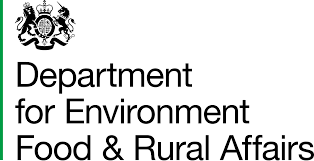The UK Vegetable Genebank
Crop Genetic Diversity - A Plant Health Solution
Charlotte Allender, UK Vegetable GenebankLink opens in a new window
What if there was a way to prevent the loss of up to 40% of crop yields without applying costly fungicides and pesticides (as well as avoiding the associated potential environmental damage)? While fungicides and pesticides are very useful substances, finding another solution to the issue of managing crop pest and diseases is essential in order to support more sustainable food production and to improve to global food security. One solution is to breed crops with resistance to problematic pests and pathogens.
Crop genetic diversity is the raw material for crop improvement. Less used parts of the crop genepool, for example in populations of wild related species and in landraces (traditional varieties developed through many generations of selection by farmers) are a source of characteristics not found in modern crop varieties. These traits include pest and disease resistances, offering a key part of the solution to current and future outbreaks of plant disease.
Crop genebanks like the UK Vegetable Genebank have the role of conserving crop genepool diversity to ensure it remains available for research and breeding. Valuable diversity is at risk of loss through habitat destruction for wild populations and historical changes to farming practices. Diverse landraces have been replaced by commercial varieties (which benefit crop production). Some of these landraces have been lost altogether, others only exist in genebank collections. Whilst many of these are not suited to modern, highly mechanised farming practices, they may harbour genes conferring resistance to plant pests and diseases.

A field trial of radish varieties from the UKVGB
The UK Vegetable Genebank manages a collection of around 14,000 seed samples of vegetable crops. Opened in 1980, our seed has been used around the world for research and crop improvement, often to screen to look for new sources of resistance to diseases such as black rot and clubroot, and pests such as carrot root fly and diamond back moth. Once a resistance trait has been identified, it is then possible to cross it into breeding lines for new varieties. It can be helpful to screen for DNA markers associated with the resistance trait in order to follow it more efficiently across generations in the breeding process.
You can visit the UKVGB webpages to find out about our work and hear from some researchers about how they use crop diversity in their research with the aim of improving resistance to pests and diseases.

Seed from different vegetable crops (left to right – onion, lettuce, radish, cabbage, parsnip)

